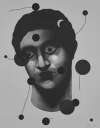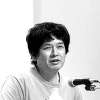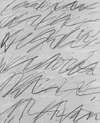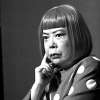Frank
Auerbach
Auerbach's visceral, expressionistic portraits and cityscapes have solidified his position as a leading figure in Post-War British art. If you're looking for Frank Auerbach original prints and editions for sale or would like to sell, request a complimentary valuation and browse our network's most in-demand works.
Frank Auerbach art for sale
Discover Frank Auerbach prints for sale, exclusively available through our private network of collectors. Explore signed and unsigned screenprints, lithographs, digital prints, and rare editioned proof prints by era-defining blue chip artists.
Sell Your Art
with Us
with Us
Join Our Network of Collectors. Buy, Sell and Track Demand
Biography
Frank Helmut Auerbach was born in Berlin to Jewish parents in 1931. At the age of seven, he was sent to England to escape Nazi persecution. In 1942, his parents died in the Auschwitz concentration camp. This early trauma would profoundly shape Auerbach's life and artistic approach.
Auerbach's artistic journey began at Bunce Court School, a boarding school for Jewish refugees in Kent. Here, he found solace in art, developing a passion that would define his life's work. In 1948, he moved to London to study at Saint Martin's School of Art, followed by the Royal College of Art.
It was during this formative period that Auerbach encountered David Bomberg, whose classes at Borough Polytechnic would have a lasting impact on his approach to painting. Bomberg's bold approach to form and structure in art resonated with Auerbach, influencing his developing style.
Auerbach's distinctive artistic voice began to take shape in the 1950s, characterised by heavily worked canvases and a dedication to a limited range of subjects. He established a rigorous routine, working every day in his Camden Town studio, which he has occupied since 1954. This unwavering commitment to his craft and his subjects has become a hallmark of his practice.
The artist's work is primarily focused on portraiture and urban landscapes, with a particular emphasis on the area around his London studio. Auerbach's portraits are notable for their intense scrutiny of the sitter, often resulting from hundreds of sittings and countless reworkings. His landscapes, particularly those of building sites in post-war London, capture the city's state of flux and renewal.
Auerbach's unique style is characterised by thick, impasto layers of paint, applied with such vigour that the canvas itself becomes part of the work's texture. This approach creates a sense of physicality and presence in his paintings, reflecting the artist's belief in the importance of direct observation and experience.
Throughout his career, Auerbach has been associated with the School of London, a group of figurative painters including Francis Bacon, Lucian Freud, and Leon Kossoff. While not a formal movement, these artists shared a commitment to figurative painting at a time when abstraction dominated the art world.
Auerbach's work has gained increasing recognition over the decades. In 1986, he represented Britain at the Venice Biennale, and in 2001, he was the subject of a major retrospective at the Royal Academy of Arts in London. Despite his success, Auerbach has maintained a modest lifestyle, dedicated solely to his art.
On 11 November 2024, Auerbach died at the age of 93.





























